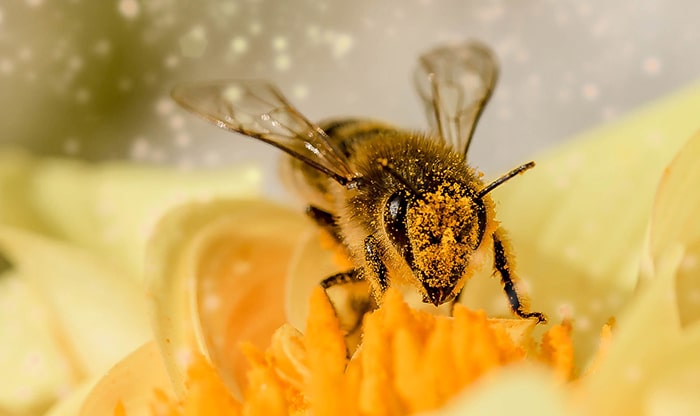
By Chris White
Special to The Voice
Historically, this time of year was about putting up the harvest to make sure there was enough food and feed to make it through the winter.
Our friends the bees have been doing the same thing with their crop of honey. There are many interesting things about this bee-made sweetener.
The honey that we eat comes from bees. During the growing season, bees forage and collect nectar from many flowering plants. Nectar is a sugary fluid produced by flowers to attract pollinating insects.
The bees ingest the nectar and bring it back to the hive (the bees’ home) in their “honey stomach.” Once they return to the hive, the nectar is regurgitated, and through a process of digestion and enzyme activity, the nectar is transformed into honey. This process reduces the water content, increases the acidity and changes the sugars.
Once made, it is stored in honeycomb which is also made by the bees. Honeycomb is made by the bees using wax that their body secretes.
At this point, the bees manipulate the temperature and humidity and air circulation in the hive using their wings and body heat to reduce the water content even further until it reaches a point that it can be stored safely without spoiling.
Humans have been collecting honey from wild bees since ancient times and have been keeping bees for a very long time as well. Based on cave paintings, experts think we have being gathering honey for more than 8,000 years, and there is a history of honey gathering in many parts of the world.
Currently most of the honey we eat comes from bees that are kept purposely as opposed to wild gathered honey. In 2017, the world produced 1.7 million tonnes of honey, and over a quarter of that came from China.
The average hive of bees in Ontario produces 80 pounds of harvested honey (beekeepers leave enough for the bees themselves, harvesting only the excess).
Here are some other facts about honeybees from the Canadian Honey Council:
- There are between 25,000 to 100,000 bees in a hive depending on the time of year.
- It takes approximately two million flower visits for a hive to produce a pound of honey and that work includes more than 55,000 miles of flying.
- Each individual bee visits 50 to 100 flowers each time they go out to forage and will make approximately one-tenth of a teaspoon in its lifetime.
In addition to being a delicious sweetener, honey is also the main ingredient in mead, which is the oldest recorded fermented beverage; older than wine or beer.
So, if you are stocking your larder for a long winter or just grabbing some groceries for tonight’s meal, when looking for something sweet, don’t forget about honey, and look for some from one of our local producers.
- Chris White lives in former Harwich Township next door to where he grew up. Chris has been employed in Agri Business for 20 years. He is passionate about food and rural communities and agriculture. He can be reached at [email protected].







we need more initiatives from all the people, to help save the bees. thanks for sharing this great info.